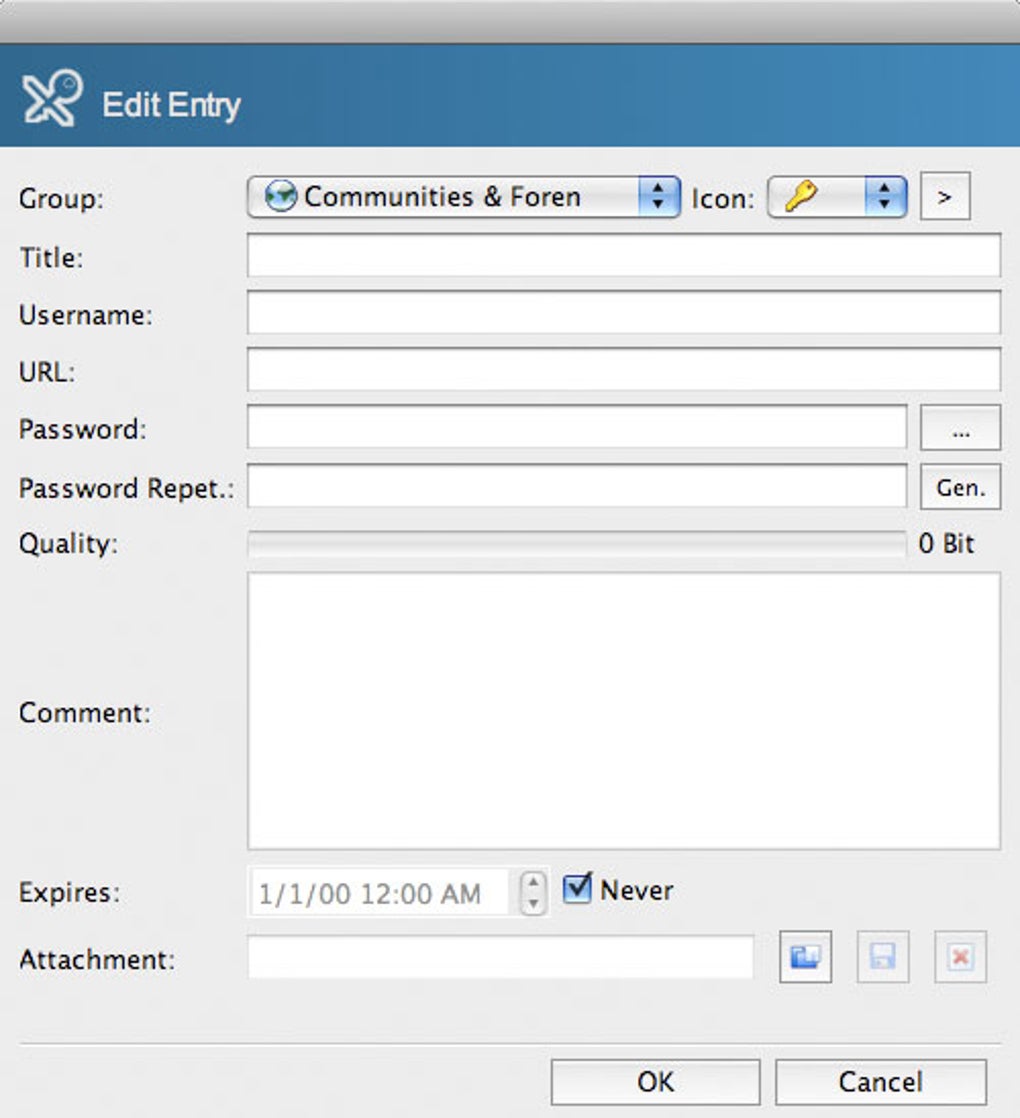
- #Keepassx autotype mac os x how to#
- #Keepassx autotype mac os x generator#
- #Keepassx autotype mac os x update#
Tl dr initialize credentials, run RDP client using those credentials, wait 5 seconds, remove credentials. If you need to debug it, you can either change the /c to /k on cmd.exe (which keeps the window open), or append “ & pause” to the end of the command that gets executed.
#Keepassx autotype mac os x how to#
How to install KeePass on Mac OS X Mountain Lion. You can also see your credentials in Control Panel > Credential Manager. You probably already know, but both KeePass and KeePassX (& now KeePassXC, a fork of KeePassX) are open. And KeePassX works better on Linux and Mac. It also has a nice synchronization feature and lots of plugins to add more capabilities. Most users state that KeePass (non-X) integrates with Microsoft Windows best. Unfortunately mstsc.exe doesn’t actually accept credentials through the command line, but it will re-use credentials that are saved in Windows. Both are now cross platform: KeePassX uses Qt libraries and recent versions of KeePass use. Information on the variables passed, see the KeePass Help Doc: Placeholders.Ĭmdkey.exe will allow you to create, display, or delete stored credentials in Windows. for Firefox by rburgst in 15 Native support for Apple Silicon Requirements MacPass 0.7.10 Full Changelog: 1.2.1.3. The double ampersands ( & ) is what allows us to chain multiple commands together. Are there any plugins for KeePassX There is. It can also import KeePass 1 (.kdb) databases. What password database formats are compatible with KeePassX KeePassX currently uses the KeePass 2 (.kdbx) password database format as the native format. It’s the series of commands we’re going to execute, and it will initialize the credentials used for RDP in Windows, call mstsc.exe (RDP client) and connect, wait 5 seconds (I don’t think this is necessary), then immediately remove those credentials from Windows. Is Auto-Type supported on Mac OS X or Windows No, Auto-Type is currently supported on Linux only. The part surrounded by quotation marks is the parameter we’re passing into cmd.exe. You can change it to /k if you would like the window to stay open after the commands are done. The /c command line switch tells cmd.exe to run the command and immediately close the Window afterwards. Immediately after cmd:// is the cmd.exe command which is the Windows Command Intrepeter – an actual Windows command. The cmd:// prefix is a KeePass specific prefix that indicates to KeePass to run the “URL” as a Windows command. It includes portable versions of the software.KeePass only supports a single command, so we have to get a little hacky to make it execute multiple consecutive commands. There are some improvements to the command-line options, you can find them in the release notes on the open-source project's GitHub page.ĭownload KeePassXC 2.7.0 for Windows, macOS and Linux from the official website. Groups can now be cloned along with their settings. You can now set the automatic backup for the database to any location of your choice, including a cloud storage drive.
#Keepassx autotype mac os x generator#
KeePassXC allows you to import custom passphrase word lists, and the password generator displays a rating for the logins, so you get an idea how strong the passwords are.

You can use to see what changes you made to it, such as which field was edited and when. The history tab (in the Edit Entry window) lists the changes that you made to the entry.
#Keepassx autotype mac os x update#
The update tags some entries by default, to highlight logins with weak passwords or expired credentials.

Password Entry - Tags, View Entry History, Password Rating and moreĮntries in the vault can now be tagged, these tags can be used to find the logins quickly, and also to organize your passwords with categories.


 0 kommentar(er)
0 kommentar(er)
